3. Colour and Camouflage
Birds' feathers create a seemingly infinite variety of colour combinations from plain white or black to vivid shades of red, blue, green and yellow. As well as providing us humans with a fascinating natural display, a bird's colours serve important practical purposes, evolving over millions of years to meet the challenges of survival in a hostile world. First, colour can provide camouflage protection from predators. And secondly, colour is often used to attract a mate and to intimidate rivals.
Let's look at camouflage first. Can you spot the plover in the picture below? Look closely at the shingle.
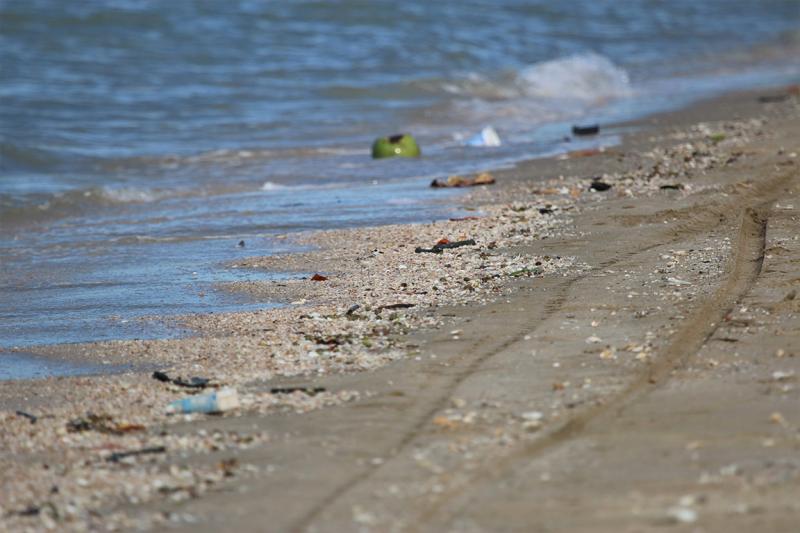
If not, the picture below clearly reveals the position of this Malaysian plover. With its mottled feathers in various shades of brown, white and black it has evolved to blend in perfectly with its shingle and sand habitat. Unfortunately, this threatened species shares its favourite haunts with the tourist industry.
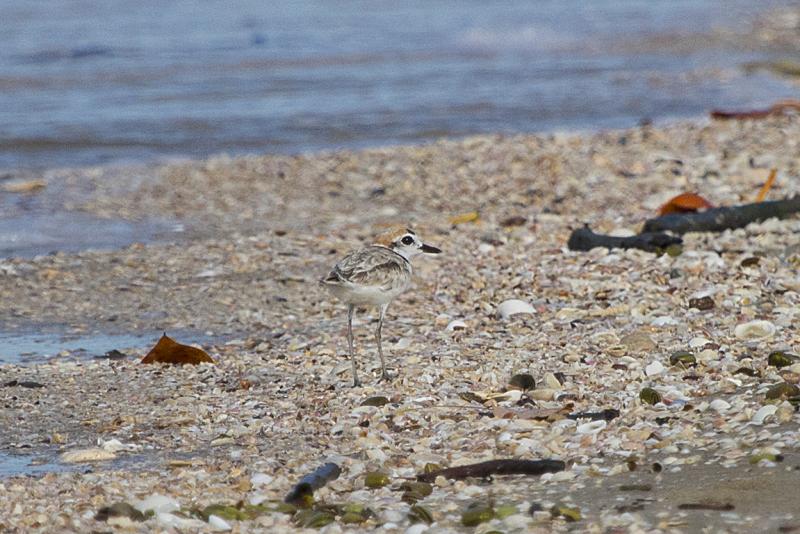
Malaysian plover
Below is a better photograph of the bird.
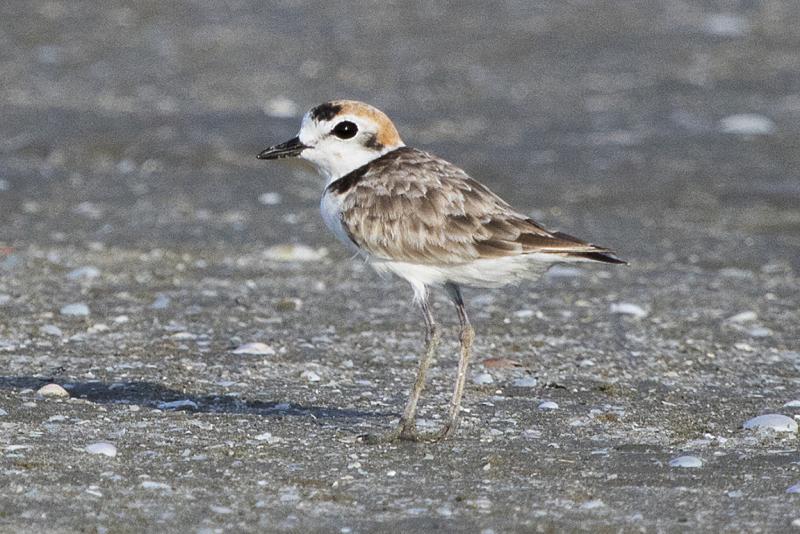
Malaysian Plover ( Male)
I photographed this handsome male Malaysian plover and the bird in the previous pictures, at Sam Roi Yot National Park Thailand. It is a typical plover feeding on the beach by making quick dashes before grabbing its unsuspecting prey such as crustaceans and "annelids" (worms) on or close to the surface. In fact, it is so well camouflaged, that the only way of spotting this small, delicate bird is when it is in motion. When alerted to danger, it will stand perfectly still making it is virtually invisible unless you know exactly where it is because you previously spotted it on the move.
Next: where in the tree below can you find a bird?
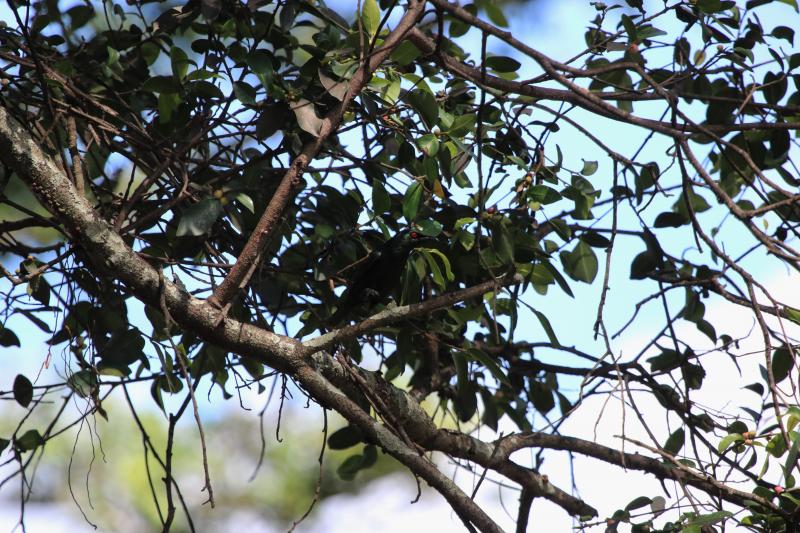
Have you found it? If not, look for the red berry - or is it a red eye?
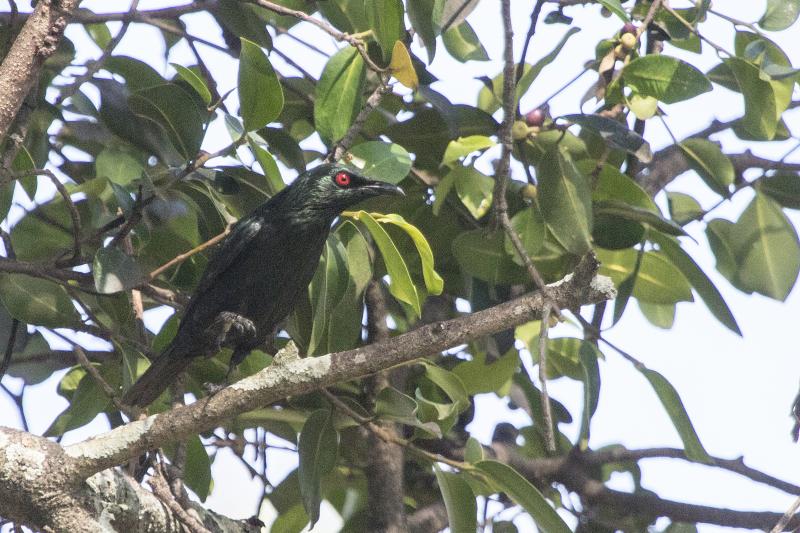
Asian Glossy Starling
This is a bird that prefers the forest canopy relying on its black feathers to hide in the shadows where it cannot be seen by predators.
Try this one:
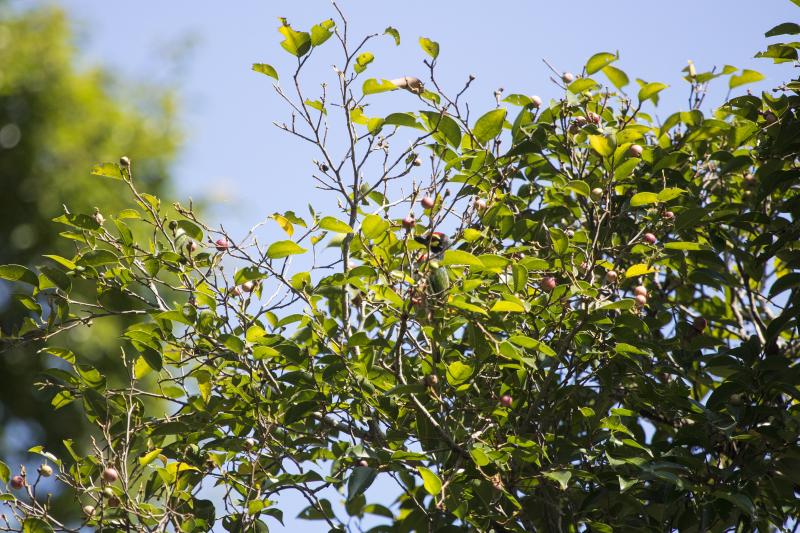
Found it?
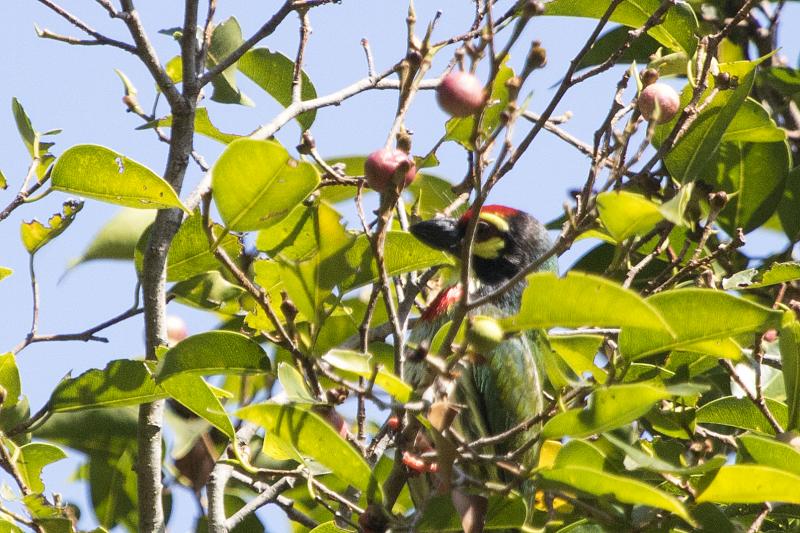
Coppersmith Barbet
Another woodland bird, but unlike the glossy starling, the coppersmith barbet is brightly coloured with red, yellow and green feathers. Yet it manages to blend into a leafy background. The greens and yellows are the colour of leaves lit from behind by sunlight, The red crown and breast is the shade of many types of berry. Natural selection produces remarkable adaptations.
I photographed both the glossy starling and the coppersmith barbet from an upper balcony window at a resort on Samosir Island, Lake Toba, Sumatra. When it comes to observing forest and woodland birds height is an advantage. If you want to know more about the techniques that enabled the examples of camouflage in the photographs above, visit "Photography" in the "Bird Watch" chapter.
Here is another picture of a male coppersmith barbet but this one photographed from an upper storey apartment in Bangkok.
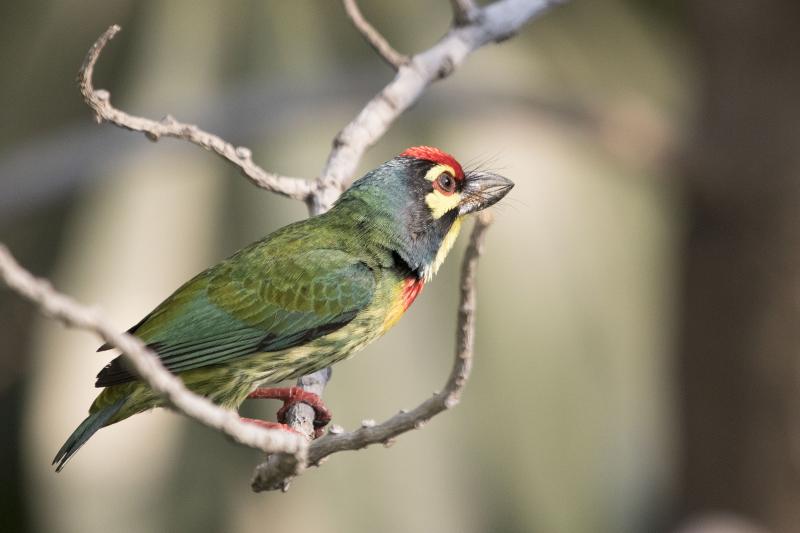
Coppersmith Barbet
It is a beautiful bird that elicits admiration from both bird watchers and prospective mates. The female of the species has similar but duller markings but this is not the case with every species. Sometimes males and females are entirely different with rather drab females and spectacular males.
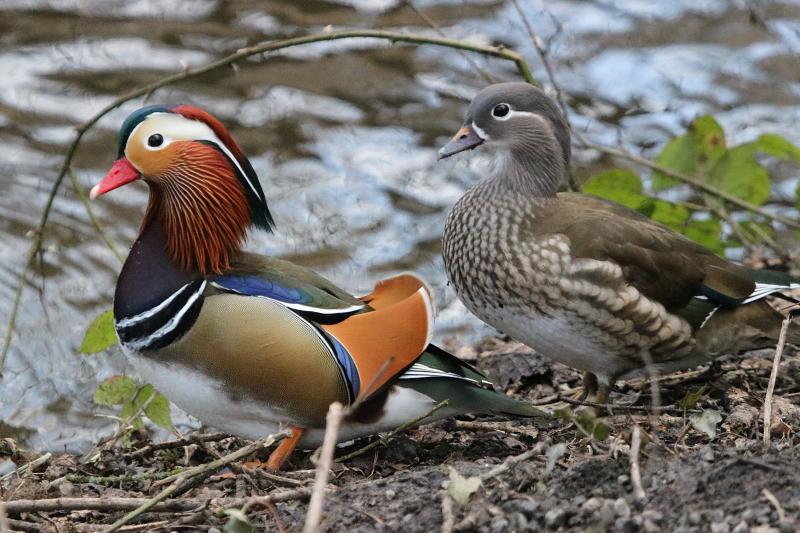
Mandarin Drake and Duck
Perhaps it is a little unfair to describe the mandarin duck as drab. It's just that the drake is so gloriously colourful. The brighter, more intense the colours, the more eligible he becomes as a potential mate and father. On the other hand, the female has the task of incubating the eggs in a nest constructed on the ground where camouflage from predators is the priority. Natural selection has resulted in the ideal match. Photographed at Etherow Country Park, Marple, United Kingdom.
The owl family (strigidae) are all heavily camouflaged. Most are nocturnal and roost during the day when many predators are active. They need to blend into their woodland habitat.
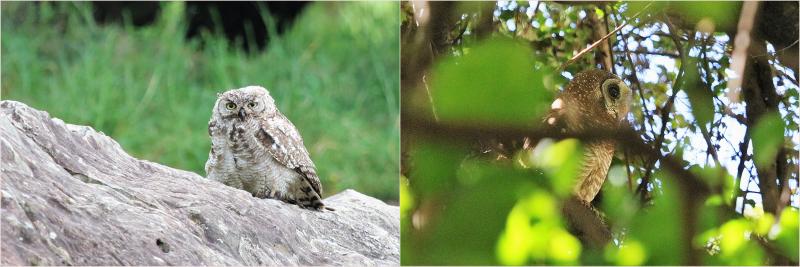
Spotted Eagle Owl African Wood Owl
I often wonder how often I have walked within a few yards of an owl and not noticed its presence. Stripes, spots, blotches, variegated patterns in brown, grey and off-white all conspire to break up the profile of an owl and enable it to blend into the background. The young spotted eagle owl on the left photographed in the Drakensberg, South Africa, has not yet learnt the art of camouflage and is conspicuous against a green background. However, an aerial predator might be hard pressed to see it against its perch on a rocky promontory. The more experienced African wood owl on the right photographed in Matobo National Park, Zimbabwe, has chosen an effective branch and leaf hiding place.
The carmine bee-eaters below, like all members of their family (Meropidae), seem to have evolved their brilliant coloured plumage without any regard to the threats posed by predators.
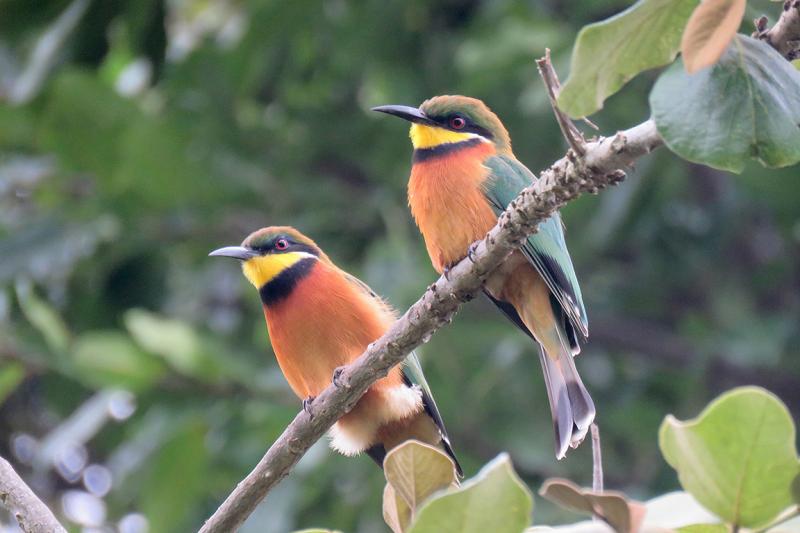
Cinnamon-chested Bee-eater
Both male and female birds appear identical although there is some evidence there may be differences visible to bee-eaters on the ultra violet spectrum that are not visible to us. Why has this the species thrived and not been eliminated by predators? Probably because of their nesting behaviour. All bee-eaters excavate nesting holes in vertical banks, often above water such as a river or lake. Since they are protected from observation by predators, the females do not required camouflage when incubating their eggs and can afford to be as beautiful as their mates! The pair above were photographed in the Kabale District, Uganda.
Bird colours are not always what they seem. Take a look at the handsome Kingfisher below.
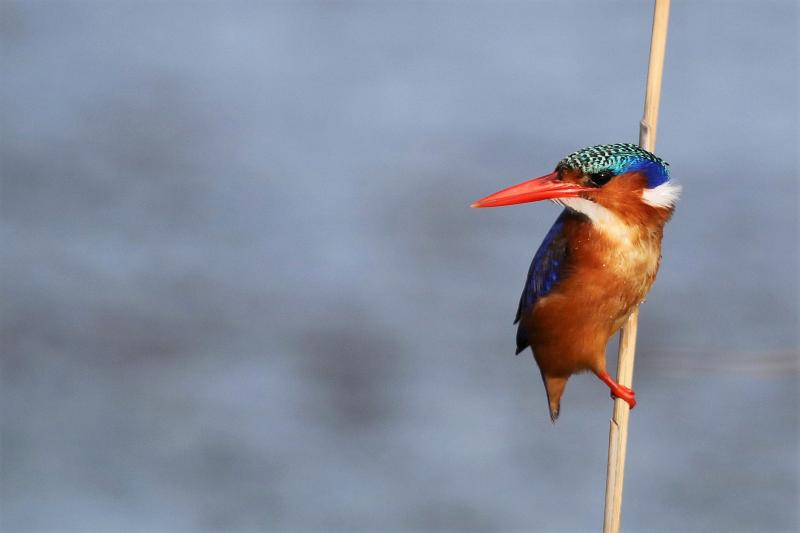
Malachite Kingfisher
The malachite kingfisher, photograped at Rondelvlei, Sedgefield, Western Cape displays a rich array of irridescent blues and reds and oranges created by light reflecting off feathers which are actually brown. In heavy shade, the malachite kingfisher will not look the colour of malachite. While very attractive to potential mates and intimidating to rivals, some predators lack the ability to perceive the brilliant refracted colours so plumage serves the dual purpose of providing camouflage and helping reproduction.
Penguins, like carmine bee-eaters seem to have evolved without the need for camouflage. However, the striking black and white plumage of both males and females is actually effective camouflage in their marine environment. Known as "Countershading", their black backs provide effective camouflage when seen from above, and when looking up into the light from below their white fronts are equally difficult to see.
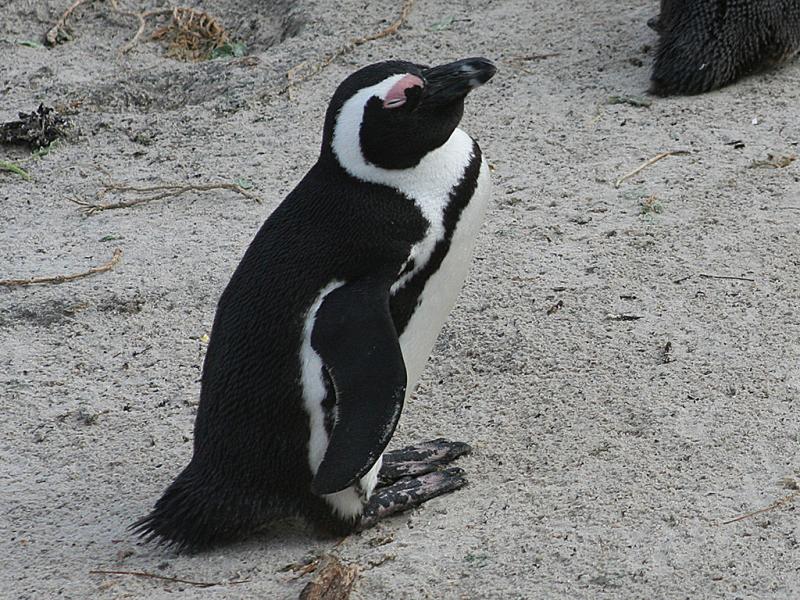
African Penguin
I photographed this sleepy penguin at Boulder Beach, Western Cape, South Africa.
The other source of colour variation in birds is pigmentation or complete lack of it. Birds that hunt and forage like the wetland bird below spend much of their time in the open with little or no shade.
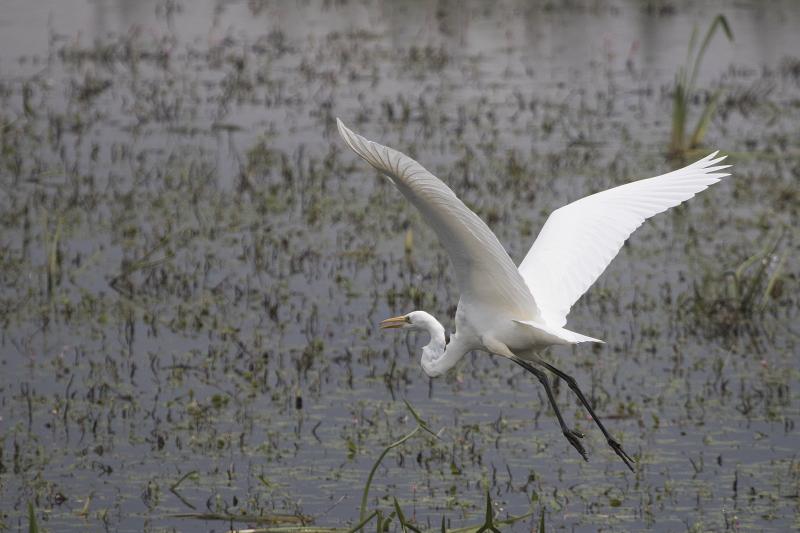
Great Egret
Some birds have evolved prioritising neither camouflage nor mating in their plumage. The white plumage of this great egret flying across a lake in the Somerset Levels, UK, reflects light and heat and helps keep the bird cool in the unshaded landscape where it hunts. The light colour against a bright sky may also conceal it from prey in the water.